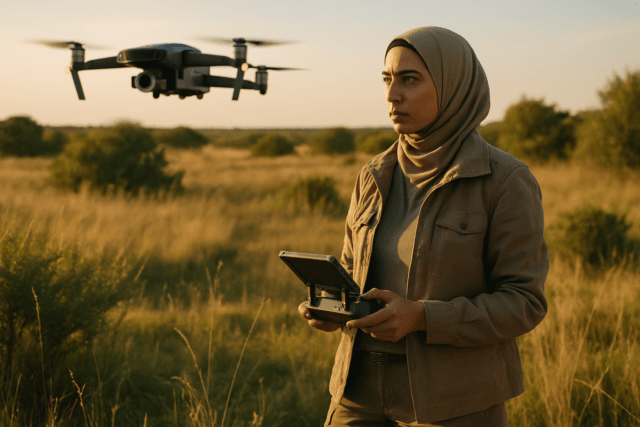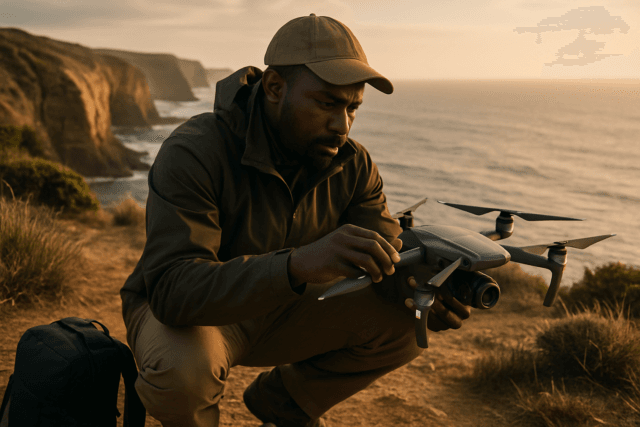Drones have become increasingly popular in recent years, with applications ranging from recreational use and aerial photography to commercial operations like surveying, agriculture, and delivery services. As drone technology advances, the market offers a wide variety of models with varying features and price points. Understanding the cost factors and comparing different drone types is crucial when making a purchase decision. This article provides a comprehensive drone cost comparison to help you find the right drone for your specific needs and budget in the UK.
Drone Price Ranges by Category
Drone prices vary significantly depending on their intended use, features, and capabilities. Here’s a breakdown of the typical price ranges for different drone categories:
- Toy Drones (£25-£300): These are entry-level drones designed for beginners and casual indoor/outdoor use. They are typically lightweight, easy to fly, and may have basic camera functions. However, they often lack advanced features like GPS, obstacle avoidance, and high-resolution cameras.
- Budget Camera Drones (£300-£1,000): These drones offer a balance between affordability and functionality, making them suitable for hobbyists and enthusiasts looking to capture aerial photos and videos. They usually feature GPS stabilization, 2.7K or 4K video recording, and decent flight times.
- Prosumer Drones (£1,000-£2,000): Prosumer drones are designed for more serious enthusiasts and semi-professional users. They offer higher-end specifications, such as 4K video with advanced settings, better camera sensors, improved flight performance, and intelligent flight modes.
- Professional/Enterprise Drones (£2,000+): These drones are built for commercial and industrial applications, offering specialized features like thermal cameras, LiDAR sensors, RTK positioning, and the ability to carry large, interchangeable payloads. Professional drones are used in various industries, including agriculture, construction, surveying, and public safety.
Factors Influencing Drone Costs
Several factors contribute to the overall cost of a drone. Understanding these factors will help you evaluate different models and make informed decisions:
Camera Quality
The camera is one of the most significant cost drivers in drones. Higher-resolution cameras, larger sensors, and advanced features like optical zoom, HDR, and stabilization will increase the price.
- Entry-level drones: Typically come with basic cameras, often with 720p or 1080p resolution, suitable for casual photography but lacking professional detail.
- Mid-range drones: Offer 2.7K or 4K resolution, providing better image quality and more detail.
- Professional drones: Equipped with 4K or higher resolution cameras and professional-grade gimbals for stable, high-quality aerial imagery and cinematography.
Flight Performance
A drone’s flight performance, including flight time, range, and speed, also affects its price. Drones with longer battery life and greater range allow for extended operations, which is particularly valuable for commercial and industrial applications.
- Consumer drones: Most consumer drones have a flight time of 15 to 30 minutes per battery charge and a range of up to 5 kilometers.
- Professional drones: Designed for industrial use, these drones may offer 45 minutes or more of flight time and can travel up to 10 kilometers or beyond.
Navigation and Stability
Advanced navigation and stabilization systems, such as GPS, obstacle avoidance, and autonomous flight modes, enhance a drone’s capabilities and increase its price.
- Basic consumer drones: Often come with simple control systems and limited automation, such as basic GPS for stability.
- Mid-range and professional drones: Frequently include GPS, return-to-home functionality, and flight stabilization. More sophisticated systems with obstacle avoidance, precision mapping, and autonomous capabilities can significantly increase the cost.
Build Quality
The materials used in a drone’s construction and its overall durability also influence its price. Drones built with high-quality materials and robust designs are better able to withstand crashes and harsh weather conditions, making them more expensive.
Intelligent Features
Many modern drones come equipped with intelligent features like subject tracking, pre-programmed flight paths, and automated filming modes. These features enhance the user experience and enable more creative and professional results, but they also add to the cost.
Ecosystem and Support
The availability of accessories, software, and customer support can also impact the overall cost of ownership. Drones from well-established brands often have a more extensive ecosystem of accessories and better customer support, which can justify a higher price.
Drone Insurance Costs in the UK
Drone insurance is an essential consideration, especially for commercial operators. It protects against potential liabilities and damages. The cost of drone insurance depends on several factors, including the type of coverage, the value of the drone, and the risk associated with your operations.
Types of Drone Insurance
- Liability Insurance: Covers legal claims and costs if your drone causes accidents, injuries, or property damage.
- Hull Insurance: Protects your drone if it gets damaged in a crash, collision, or other covered events.
- Payload Insurance: Covers the equipment attached to your drone, such as cameras or sensors.
- Ground Equipment Insurance: Covers items like your controller or spare batteries.
Factors Affecting Insurance Costs
- Coverage Limit: Higher coverage limits will result in higher premiums.
- Drone Value: The more expensive your drone, the more you’ll pay for hull insurance.
- Type of Operations: Riskier operations, such as flying in urban areas or conducting deliveries, will increase your insurance costs.
- Pilot Experience: Experienced pilots with a clean flying record may qualify for lower premiums.
- Geographic Location: Premiums can vary depending on your operational area.
Average Insurance Costs
- Liability-only insurance: For £1 million coverage, expect to pay around £500-£800 per year.
- Hull insurance: Typically costs 8-12% of your drone’s value per year.
- On-demand insurance: Some companies offer short-term insurance options, with liability coverage starting at around £10 per hour.
- High-risk operations: Annual rates for complex operations like drone shows or deliveries can start at £3,000 or higher.
Tips for Lowering Insurance Costs
- Follow safe flying rules and regulations.
- Keep detailed flight records.
- Get proper safety training.
- Avoid inflating your drone’s value when buying insurance.
Additional Costs of Drone Ownership
Besides the initial purchase price and insurance, several other costs are associated with drone ownership:
- Extra Batteries: Most drones include just one battery, providing a limited flight time. Purchasing extra batteries can significantly extend your flying sessions. Batteries can cost anywhere from £40 for small drones to over £150 for higher-end models.
- Propellers and Spare Parts: Propellers are prone to damage, especially during crashes. Having spare propellers and other essential parts on hand can minimize downtime.
- SD Cards: High-quality SD cards are essential for recording aerial footage.
- Carrying Case or Backpack: A carrying case or backpack protects your drone during transport and storage.
- ND Filters: Neutral density (ND) filters reduce the amount of light entering the camera, allowing you to shoot in bright conditions without overexposure.
- Software & Editing Tools: Video editing software may be required to produce professional-looking content.
Popular Drone Models and Their Costs
Here’s a comparison of some popular drone models available in the UK, along with their approximate costs and key features:
DJI Drones
DJI is the dominant player in the consumer drone market, offering a wide range of models for different skill levels and budgets.
- DJI Mini 4 Pro: A compact and lightweight drone (under 250g) with a high-quality camera, omnidirectional obstacle sensing, and intelligent flight modes. It is priced around £700-£1000 depending on the package.
- DJI Air 3: A versatile all-rounder drone with a dual-camera system, 4K/60fps video recording, and a flight time of up to 46 minutes. Prices range from £900 to £1300.
- DJI Mavic 3 Pro: A high-end prosumer drone featuring a triple-camera system with a Hasselblad wide-angle lens, a 3x medium telephoto lens, and a 7x telephoto lens. It offers exceptional image quality and advanced features, with prices starting from £1900.
- DJI Avata 2: An FPV (first-person view) drone designed for immersive flying experiences. It features a compact, ducted propeller design and can record up to 4K/60fps video. The price is around £900-£1100.
Autel Robotics Drones
Autel Robotics is a competitor to DJI, offering drones with similar features and performance.
- Autel EVO Lite+: A mid-weight drone with a 1-inch CMOS sensor, adjustable aperture, and 5.4K video recording. Prices range from £1000 to £1300.
- Autel EVO II Pro: A prosumer drone with a high-resolution camera, long flight time, and robust specifications. It is priced around £1500-£2000.
UK Drone Laws and Regulations
Before purchasing and flying a drone in the UK, it’s essential to understand the relevant laws and regulations. The Civil Aviation Authority (CAA) is responsible for regulating drone operations in the UK.
Registration and Identification
- Anyone flying a drone weighing over 250g must pass a basic online test and obtain a Flyer ID from the CAA.
- Operators of drones weighing over 250g or equipped with a camera must register with the CAA and obtain an Operator ID.
- The Operator ID must be displayed on the drone.
Flight Restrictions
- Drones must be flown within visual line of sight (VLOS).
- The maximum flight altitude is 400 feet (120 meters) above the surface.
- Drones must not be flown in restricted airspace, such as near airports, without permission.
- Drones must not be flown over crowds or organized open-air assemblies of more than 1,000 people.
- Drones must not be flown within 50 meters of any person, property, vessel, vehicle, or structure that is not under the control of the person in charge of the aircraft.
Operational Categories
The UK drone regulations divide operations into three categories:
- Open: For low-risk operations, such as recreational flying.
- Specific: For higher-risk operations that require authorization from the CAA.
- Certified: For very high-risk operations, such as transporting passengers or dangerous goods.
Conclusion
Choosing the right drone involves considering various factors, including your intended use, budget, and desired features. By understanding the different drone categories, cost drivers, and UK regulations, you can make an informed decision and find a drone that meets your needs and provides a safe and enjoyable flying experience. Remember to factor in the additional costs of drone ownership, such as insurance, extra batteries, and accessories, to get a complete picture of the overall investment.





